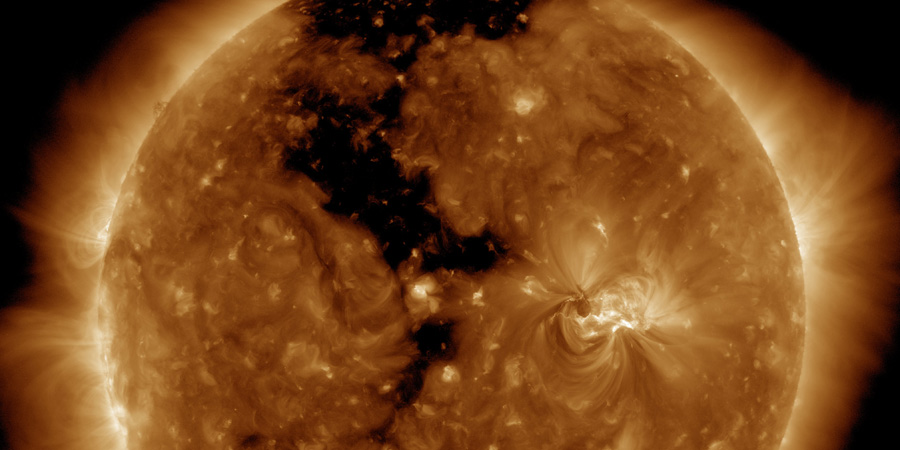Coronal hole faces Earth, DSCOVR glitches
Monday, 28 August 2017 18:49 UTC

A southern extension of the northern hemisphere polar coronal hole that extends all the way south of the solar equator is now facing Earth.
The solar wind flowing from this coronal hole is expected to reach our planet in about 48 to 72 hours from now and is likely to cause enhanced auroral conditions on 31 August.
A coronal hole is facing Earth. Enhanced solar wind could arrive in ~3 days - Follow live on https://t.co/T1Jkf6i4Cb pic.twitter.com/VfLOyDZ7qd
— SpaceWeatherLive (@_SpaceWeather_) August 28, 2017
DSCOVR glitches
A word of caution for those who keep an eye on the solar wind data from DSCOVR: The past 24 hours or so we saw a lot of crazy solar wind values where the speed suddenly reached 500km/s or even above 800km/s.
This is a known issue with DSCOVR when the solar wind is slow and the solar wind density becomes very low. The spacecraft starts to track signal noise and mistakenly reports this as high solar wind speeds. So be careful when you watch DSCOVR and see these kind of high solar wind speed values. They could be false!
A great tip is to check the data from ACE as well because ACE normally doesn't suffer from these kind of issues! The main data on our site comes from DSCOVR but there are drop down buttons with ACE and SOHO data as well! You can find the data on this page.
Thank you for reading this article! Did you have any trouble with the technical terms used in this article? Our help section is the place to be where you can find in-depth articles, a FAQ and a list with common abbreviations. Still puzzled? Just post on our forum where we will help you the best we can!
Latest news
Latest forum messages
Support SpaceWeatherLive.com!
A lot of people come to SpaceWeatherLive to follow the Sun's activity or if there is aurora to be seen, but with more traffic comes higher server costs. Consider a donation if you enjoy SpaceWeatherLive so we can keep the website online!

Space weather facts
| Last X-flare | 2025/01/04 | X1.85 |
| Last M-flare | 2025/01/22 | M1.3 |
| Last geomagnetic storm | 2025/01/04 | Kp5 (G1) |
| Spotless days | |
|---|---|
| Last spotless day | 2022/06/08 |
| Monthly mean Sunspot Number | |
|---|---|
| December 2024 | 154.5 +2 |
| January 2025 | 145.8 -8.7 |
| Last 30 days | 161.9 +43 |


